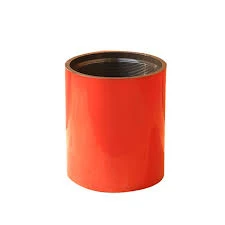- Afrikaans
- Albanian
- Amharic
- Arabic
- Armenian
- Azerbaijani
- Basque
- Belarusian
- Bengali
- Bosnian
- Bulgarian
- Catalan
- Cebuano
- Corsican
- Croatian
- Czech
- Danish
- Dutch
- English
- Esperanto
- Estonian
- Finnish
- French
- Frisian
- Galician
- Georgian
- German
- Greek
- Gujarati
- Haitian Creole
- hausa
- hawaiian
- Hebrew
- Hindi
- Miao
- Hungarian
- Icelandic
- igbo
- Indonesian
- irish
- Italian
- Japanese
- Javanese
- Kannada
- kazakh
- Khmer
- Rwandese
- Korean
- Kurdish
- Kyrgyz
- Lao
- Latin
- Latvian
- Lithuanian
- Luxembourgish
- Macedonian
- Malgashi
- Malay
- Malayalam
- Maltese
- Maori
- Marathi
- Mongolian
- Myanmar
- Nepali
- Norwegian
- Norwegian
- Occitan
- Pashto
- Persian
- Polish
- Portuguese
- Punjabi
- Romanian
- Russian
- Samoan
- Scottish Gaelic
- Serbian
- Sesotho
- Shona
- Sindhi
- Sinhala
- Slovak
- Slovenian
- Somali
- Spanish
- Sundanese
- Swahili
- Swedish
- Tagalog
- Tajik
- Tamil
- Tatar
- Telugu
- Thai
- Turkish
- Turkmen
- Ukrainian
- Urdu
- Uighur
- Uzbek
- Vietnamese
- Welsh
- Bantu
- Yiddish
- Yoruba
- Zulu
bull plug pressure rating
Understanding Bull Plug Pressure Ratings
In various industrial applications, ensuring the integrity and safety of piping systems is of utmost importance. One of the critical components often encountered in these systems is the bull plug. Commonly used in the oil, gas, and water sectors, bull plugs are essential for sealing openings in piping or valves to prevent leaks and maintain pressure. A key aspect of bull plugs is their pressure rating, which indicates the maximum pressure the plug can withstand without failure.
What is a Bull Plug?
A bull plug is a type of threaded plug used to terminate or seal the end of a pipe or fitting. They are typically made from materials such as steel, stainless steel, or plastic, depending on the application's requirements. The design features a tapered or flat end which screws into a corresponding female thread, providing a reliable seal. In some instances, bull plugs may be used in conjunction with other sealing devices, like gaskets or O-rings, to enhance their leak-proof capabilities.
Importance of Pressure Ratings
Pressure ratings are a vital aspect of bull plugs, as they determine how much internal pressure the plug can safely withstand. This rating is crucial for several reasons
1. Safety Assurance High pressure within pipelines poses serious risks, including potential rupture or explosion. Understanding the pressure rating of a bull plug can help prevent catastrophic failures and ensure the safety of personnel and equipment.
2. System Integrity The operational efficiency of a system depends on maintaining pressure within designed limits. Using bull plugs that exceed their pressure ratings could compromise the system’s integrity and lead to costly repairs and downtime.
3. Regulatory Compliance Many industries are subject to specific regulations regarding pressure ratings for components used in their systems. Adhering to these regulations not only ensures safety but also helps businesses avoid legal liabilities.
bull plug pressure rating

4. Operational Efficiency Appropriate pressure ratings allow for optimal system performance. Choosing a bull plug with a suitable pressure rating ensures that energy is not wasted due to leaks or the need for additional compression measures.
Determining Pressure Ratings
The pressure rating of a bull plug is typically defined by various standards, which may include ASME (American Society of Mechanical Engineers), API (American Petroleum Institute), or ASTM (American Society for Testing and Materials). These organizations establish guidelines for material properties, dimensions, and performance criteria.
It’s also essential to consider other factors that contribute to a bull plug’s pressure rating, including
- Material Strength The type of material used in the construction of the plug significantly influences its pressure capacity. For example, stainless steel offers better resistance to corrosion and high-temperature conditions than plastic does, making it suitable for demanding environments.
- Temperature Resistance The operational temperature of the environment can impact the pressure rating. Materials may lose strength when exposed to excessive heat, which can alter the effectiveness of the seal.
- Thread Design The threading on the bull plug should be adequately designed to handle the specified pressure. A well-designed thread profile, along with proper lubrication and installation, can enhance the overall capacity of the plug.
Conclusion
In summary, the pressure rating of bull plugs is a critical factor that cannot be overlooked in industrial applications. It ensures safety, compliance, and efficiency within piping systems. When selecting bull plugs, it is crucial to familiarize yourself with the relevant standards and guidelines to choose the appropriate product that meets your specific requirements. By doing so, industries can avoid potential failures, ensure safe operations, and maintain the integrity of their systems for years to come.
-
Tubing Pup Joints: Essential Components for Oil and Gas OperationsNewsJul.10,2025
-
Pup Joints: Essential Components for Reliable Drilling OperationsNewsJul.10,2025
-
Pipe Couplings: Connecting Your World EfficientlyNewsJul.10,2025
-
Mastering Oilfield Operations with Quality Tubing and CasingNewsJul.10,2025
-
High-Quality Casing Couplings for Every NeedNewsJul.10,2025
-
Boost Your Drilling Efficiency with Premium Crossover Tools & Seating NipplesNewsJul.10,2025







